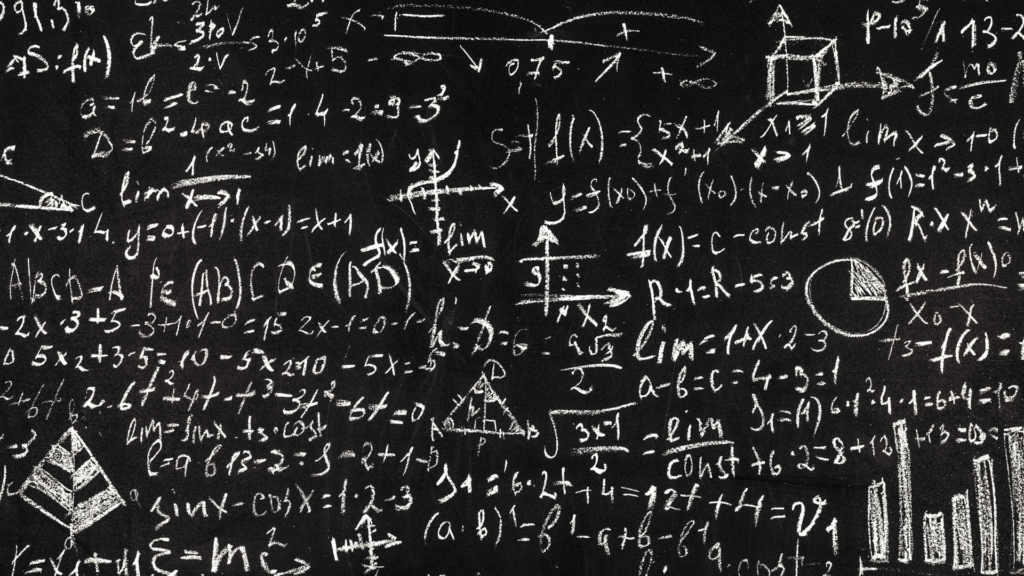
How To Find A Limit Analytically?
Limits are a foundational concept in calculus. A limit describes the value that a function approaches as the input approaches some value. Being able to evaluate limits is crucial for understanding continuity, derivatives, and integrals.
The goal of finding limits analytically is to determine the limit value of a function at a point without actually evaluating the function directly at that point. There are several techniques used to evaluate limits algebraically, such as direct substitution, applying limit laws, finding limits at infinity, and using L’Hopital’s Rule.
Mastering these techniques allows you to find limits for many functions without having to graph or numerically estimate the function’s output. Analytic limit calculation skills are essential for succeeding in calculus and higher level math courses. This content will explain all the key strategies and rules for finding limits of functions analytically.
Review Basic Limit Properties
Finding limits analytically relies on understanding and applying certain limit properties and rules. Let’s do a quick review of some of the key properties:
– Constant Limits: The limit of a constant is the constant itself. If lim x->a f(x) = C, then lim x->a C = C. The limit of a constant function is simply the value of the constant.
– Limits of Sums and Differences: The limit of a sum or difference is the sum or difference of the limits. If lim x->a f(x) = L1 and lim x->a g(x) = L2, then lim x->a [f(x) + g(x)] = L1 + L2 and lim x->a [f(x) – g(x)] = L1 – L2.
– Limits of Products and Quotients: The limit of a product is the product of the limits. The limit of a quotient is the quotient of the limits. If lim x->a f(x) = L1 and lim x->a g(x) = L2, with L2 ≠ 0, then lim x->a [f(x) * g(x)] = L1 * L2 and lim x->a [f(x) / g(x)] = L1 / L2.
– Limits of Powers: The limit of f(x)^n as x approaches a is [lim f(x)]^n. If lim x->a f(x) = L, then lim x->a [f(x)]^n = L^n for any constant n.
– Limits involving Absolute Value: If lim x->a f(x) = L, then lim x->a |f(x)| = |L|. The limit of the absolute value is the absolute value of the limit.
Understanding these basic limit properties is key for evaluating limits analytically. We’ll apply these frequently as we work through more complex limit examples.
Learn About Limits at Infinity
Limits at infinity describe the behavior of a function as the input approaches positive or negative infinity. They allow us to understand how the function grows or decays as x gets arbitrarily large in magnitude.
For example, consider the function f(x) = x. As x increases positively without bound, f(x) also increases positively without bound. We say:
$$\lim_{x \to \infty} x = \infty$$
In other words, as x approaches positive infinity, f(x) approaches positive infinity.
Similarly, for the function f(x) = 1/x, as x increases positively without bound, f(x) decreases towards 0.
$$\lim_{x \to \infty} \frac{1}{x} = 0$$
We can also consider limits as x approaches negative infinity. For example:
$$\lim_{x \to -\infty} x = -\infty$$
$$\lim_{x \to -\infty} \frac{1}{x} = 0$$
The concept of limits at infinity allows us to analyze the end behavior of functions and understand their growth patterns. Practicing these types of limits is helpful preparation for studying more advanced calculus topics like derivatives and integrals.
Understand Continuity
Continuity is an important concept in calculus that is closely related to limits. A function f(x) is said to be continuous at a point x = a if:
1. f(a) exists
2. lim f(x) as x approaches a exists
3. lim f(x) as x approaches a = f(a)
In other words, for a function to be continuous at a point, the function must be defined at that point and the limit of the function as x approaches that point must exist and be equal to the function value at that point.
Continuity essentially means that the graph of the function has no breaks or gaps at the point a. Small changes in x near a result in small changes in f(x).
If any of the above three conditions are not met, then the function is said to be discontinuous at x = a. Discontinuities can take several forms:
– Removable discontinuities: The function is undefined at a point but the limit exists. These can be “repaired” by defining the function at the point.
– Jump discontinuities: The function is defined on both sides of a but the limiting values on each side are unequal. This creates a break or jump in the graph.
– Infinite discontinuities: The function approaches positive or negative infinity from one side of a.
Some examples of discontinuities:
– f(x) = 1/x has a removable discontinuity at x = 0. We can define f(0) = 0 to make it continuous there.
– f(x) = 1/x^2 has an infinite discontinuity at x = 0. The function approaches +/- infinity from each side.
– f(x) = sin(1/x) has a jump discontinuity at x = 0. The limits from each side do not match.
Understanding continuity and types of discontinuities allows us to analyze functions and identify any breaks or jumps in their graphs. It is an important step before computing derivatives or integrals.
Apply Algebraic Limit Laws
Limits follow certain algebraic rules that allow you to evaluate some limits without having to directly plug in the value. Using limit laws can greatly simplify evaluating complex limits. Here are some of the main algebraic limit laws to know:
Sum Law
The limit of a sum is equal to the sum of the limits:
$$\lim_{x \to a} (f(x) + g(x)) = \lim_{x \to a} f(x) + \lim_{x \to a} g(x)$$
For example:
$$\lim_{x \to 0} (x^2 + 3x) = \lim_{x \to 0} x^2 + \lim_{x \to 0} 3x = 0 + 0 = 0$$
Difference Law
The limit of a difference is equal to the difference of the limits:
$$\lim_{x \to a} (f(x) – g(x)) = \lim_{x \to a} f(x) – \lim_{x \to a} g(x)$$
For example:
$$\lim_{x \to 1} (x^2 – x) = \lim_{x \to 1} x^2 – \lim_{x \to 1} x = 1 – 1 = 0$$
Constant Multiple Law
The limit of a constant times a function is the constant times the limit of the function:
$$\lim_{x \to a} c\cdot f(x) = c\cdot\lim_{x \to a} f(x)$$
For example:
$$\lim_{x \to 0} 3x = 3\lim_{x \to 0} x = 3(0) = 0$$
Quotient Law
The limit of a quotient is the quotient of the limits:
$$\lim_{x \to a} \frac{f(x)}{g(x)} = \frac{\lim_{x \to a} f(x)}{\lim_{x \to a} g(x)}$$
As long as $\lim_{x \to a} g(x) \neq 0$.
For example:
$$\lim_{x \to 2} \frac{x^2 – 4}{x – 2} = \frac{\lim_{x \to 2} x^2 – 4}{\lim_{x \to 2} x – 2} = \frac{4 – 4}{2 – 2} = \frac{0}{0} = 0$$
Understanding and applying these basic limit laws can help simplify evaluating many limits algebraically without having to directly plug in values.
Use Direct Substitution
Direct substitution is a straightforward technique for finding limits, but it does not work in all cases. The method involves simply plugging in the value that x is approaching directly into the function.
For example, to find the limit as x approaches 2 of f(x) = 3x + 1, we can substitute 2 for x:
`lim_{x→2} (3x + 1) = 3(2) + 1 = 7`
Therefore, the limit as x approaches 2 is 7.
Direct substitution works when the function is continuous at the point we are evaluating. Intuitively, this makes sense – if the function is well-behaved near the point with no abrupt jumps or asymptotes, we can just plug in the value and directly evaluate.
However, direct substitution fails when the function is discontinuous at that point. Consider:
`lim_{x→0} (1/x)`
If we plug in 0 directly, we get:
`lim_{x→0} (1/0)`
This results in undefined behavior. The function 1/x has a vertical asymptote at x = 0, so direct substitution fails here. We would need to apply other techniques like L’Hopital’s Rule.
The main takeaway is that direct substitution is a quick and easy way to evaluate limits, but it only works when the function is continuous. Look out for asymptotes, points of discontinuity, or pieces of the function that are “missing” before applying this method.
Apply Limits to Rational Functions
Rational functions are quotients of polynomials, which means they contain algebraic expressions in both the numerator and denominator. Finding limits of rational functions requires algebraic techniques like factoring and conjugate multiplication to simplify the expression before evaluating the limit.
Limits of rational functions are found by reducing the function to one of three forms:
– A quotient in which both the numerator and denominator approach finite nonzero values
– A quotient in which the numerator approaches a finite nonzero value and the denominator approaches infinity
– A quotient in which both the numerator and denominator approach zero
Once simplified into one of these forms, you can then evaluate the limit based on the behavior of the simplified function.
Here is an example of using factoring to find the limit of a rational function:
`lim x→2 (x^2 – 4) / (x – 2)`
To find this limit, we factor the numerator:
`(x + 2)(x – 2) / (x – 2)`
The (x – 2) terms cancel out, leaving:
`lim x→2 (x + 2) = 4`
So the limit equals 4.
Another technique for evaluating limits of rational functions is conjugate multiplication. This involves multiplying the numerator and denominator by the conjugate of the denominator.
For example:
`lim x→3 (x^2 – 9) / (x – 3)`
Multiplying the numerator and denominator by the conjugate (x + 3) gives:
`lim x→3 (x^2 – 9)(x + 3) / (x – 3)(x + 3)`
Which simplifies to:
`lim x→3 (x + 3)(x – 3) / (x – 3)(x + 3) = 6`
So the limit equals 6. Conjugate multiplication is useful for simplifying rational functions with binomial denominators.
Factoring and conjugate multiplication are two essential techniques for finding limits of rational functions algebraically. With practice, you can master how to manipulate and simplify rational expressions to evaluate their limits.
Find Limits at Infinity for Rational Functions
When finding limits at infinity for rational functions, we analyze the degree of the numerator and denominator. The degree simply refers to the highest power of x that appears in the numerator and denominator.
There are a few key rules to follow:
– If the degree of the numerator is greater than the degree of the denominator, then the limit equals infinity or negative infinity. For example:
“`
lim x->inf (x^2)/(x) = inf
“`
– If the degree of the numerator equals the degree of the denominator, then the limit equals the coefficient of the leading term in the numerator divided by the coefficient of the leading term in the denominator. For example:
“`
lim x->inf (3x^2)/(5x^2) = 3/5
“`
– If the degree of the denominator is greater than the degree of the numerator, then the limit equals 0. For example:
“`
lim x->inf (x)/(x^2) = 0
“`
Let’s look at some examples to see these rules in action:
“`
lim x->inf (x^3+2x)/(4x^2-x)
“`
Here the numerator degree is 3 and the denominator degree is 2. Since the numerator has a greater degree, the limit is infinity.
“`
lim x->inf (3x+5)/(7x-2)
“`
The numerator and denominator both have degree 1, so we look at the leading coefficients. The limit equals 3/7.
“`
lim x->inf (4)/(x^4)
“`
The denominator has a greater degree than the numerator, so the limit is 0.
Analyzing the degrees of the numerator and denominator is a quick way to determine limits at infinity for rational functions. With some practice, you’ll get the hang of identifying the degrees and applying the rules.
Learn About L’Hopital’s Rule
L’Hopital’s Rule is an important theorem used to evaluate certain indeterminate limits analytically. The theorem states that if `lim f(x)/g(x)` is an indeterminate form such as 0/0 or ∞/∞, and if `f` and `g` are differentiable at the point of interest, then:
`lim f(x)/g(x) = lim f'(x)/g'(x)`
In other words, if the limit of the ratio of two functions is an indeterminate form, we can instead take the limit of the ratio of the derivatives of those functions. This allows us to evaluate limits that are otherwise difficult or impossible to solve directly.
L’Hopital’s Rule applies when:
– The limit results in an indeterminate form like 0/0 or ∞/∞
– `f(x)` and `g(x)` are differentiable at the point of interest
– `f'(x)` and `g'(x)` are continuous at the point of interest
For example, to find the limit:
`lim x->0 (sin(x))/x`
We recognize this is an indeterminate form of 0/0. Applying L’Hopital’s Rule gives:
`lim x->0 (sin(x))/x = lim x->0 (cos(x))/1 = 1`
The key is recognizing when L’Hopital’s Rule can be applied to transform a limit into a solvable form. With practice, you’ll develop intuition for when the conditions are right to use L’Hopital’s Rule to find limits analytically.
Practice Finding Limits
Now that we’ve covered the various techniques for evaluating limits analytically, let’s apply what we’ve learned with some practice problems. Finding limits takes practice, so working through examples is the best way to gain mastery.
Elementary Limits
Let’s start with some basic limit problems that can be solved by direct substitution or basic limit laws:
1. $\lim_{x\to 2} (x^2 – 4) = 0$
To evaluate, simply substitute 2 for x:
$\lim_{x\to 2} (2^2 – 4) = 0$
2. $\lim_{x\to 0} \frac{1}{x} = \infty$
We recognize this as a limit that goes to infinity as x approaches 0.
3. $\lim_{x\to -2} |x + 2| = 0$
Using the absolute value, we can directly substitute -2 for x.
Limits at Infinity
Now let’s try some limits as x approaches infinity:
4. $\lim_{x\to\infty} \frac{x^2 + 3x – 1}{x^2 + x} = 1$
We can divide the numerator and denominator by the highest power of x to evaluate.
5. $\lim_{x\to\infty} (2x + 3) = \infty$
As x gets very large, the 2x term dominates, so this limit goes to infinity.
L’Hopital’s Rule
Finally, let’s use L’Hopital’s Rule to evaluate some indeterminate limits:
6. $\lim_{x\to 0} \frac{\sin x}{x} = 1$
This limit is indeterminate, so we use L’Hopital’s Rule and take the derivative of the numerator and denominator to find the limit.
7. $\lim_{x\to\infty} \frac{1}{x^2} = 0$
L’Hopital’s Rule allows us to evaluate this limit at infinity.
Practicing evaluating a wide variety of limits is the key to mastery. With these examples and the techniques reviewed, you should be prepared to find limits analytically.
Leave a Reply
- AI in Diagnostics: Revolutionizing Early Detection and Accuracy
- How AI and Advanced Analytics Are Transforming Healthcare Outcomes
- Investing with Confidence: The Role of ROI Calculators
- How ROI Calculators Drive Data-Driven Business Strategies
- The Ultimate Guide to ROI Calculators for Business Success
- Making Sense of ROI Calculators: A Comprehensive Guide
- June 2025 (1)
- May 2025 (1)
- October 2024 (2)
- September 2024 (31)
- August 2024 (31)
- July 2024 (27)
- June 2024 (28)
- May 2024 (30)
- April 2024 (33)
- March 2024 (23)
- February 2024 (29)
- January 2024 (3)
- December 2023 (47)
- November 2023 (36)
- October 2023 (23)
- September 2023 (2)
- June 2023 (2)
- May 2023 (13)
- April 2023 (1)




